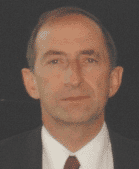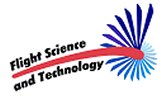| |
||||||||||
| FLIGHT SCIENCE AND TECHNOLOGY | ||||||||||
| The Department of Engineering | Flight Science and Technology Group | Test Pilots | ||||||||||
|
|
||||||||||
|
Test Pilots
After graduating in December 1986 he joined Flight Systems Squadron at the Royal Aircraft Establishment, Bedford. He was appointed the Officer Commanding Aerospace Research Squadron in 1988 and retired from the Royal Air Force in December 1989. After leaving the RAF he joined the College of Aeronautics at Cranfield University as Chief Test Pilot, a post he holds to the present day. In 1989 he joined the volunteer pilot cadre of the Shuttleworth Collection, a museum of over thirty airworthy veteran aircraft. With the Shuttleworth Collection he has flown early aircraft including the Bristol Boxkite and Avro Triplane replicas and the Bleriot, Deperdussin and Blackburn original monoplanes.
Returned to operational service in 1992 with 846 Squadron including duties as Senior Pilot before returning to the Empire Test Pilots’ School as a tutor. In 1995 became Staff Aviation Officer to the Commodore Amphibious Warfare responsible for all aspects of amphibious aviation for the Royal Navy and Marines. Saw operational service in Northern Ireland, the South Atlantic, Lebanon and Bosnia. Completed three seasons as display pilot on Gazelle, both solo and as team leader in formation team, and competed in both the World and British Helicopter Championships winning eleven national and international trophies, including twice British Helicopter Champion on two occasions. Awarded the Air Force Cross in 1989. Left the Royal Navy in 1996 to become an airline pilot, currently flying Boeing 747-400 on long haul routes with British Airways. In addition, carries out instructional flying on light turbine helicopters and corporate helicopter operations on Agusta 109 and Gazelle. Crew Resource Management training conducted for both fixed and rotary wing operators. Commissioned the James Bibby simulator at Liverpool University in 2000 and continues with both student studies and R&D as a consultant.
Wing Commander Martin Mayer joined the RAF in1963 for pilot training and in 1965 joined his first helicopter squadron in Borneo for jungle operations against Indonesia flying Westland Whirlwinds. In 1967 he became an instructor and in 1969 attended the Empire Test Pilots’ School (ETPS). As a test pilot at Boscombe Down he flew all the current military helicopters, and was project pilot for the introduction of the Puma into RAF service for which he was awarded the Air Force Cross. After tours as a Puma instructor, flight commander in Germany and tutor at ETPS, he was promoted to command the UK Chinook squadron. As a diplomat, he served as Air Advisor in Nairobi and Defence Advisor in Dar Es Salaam before returning to command ETPS where he instructed test pilot students on 8 aircraft types, both fixed- and rotary-winged. He advised the Director of the European Astronaut Centre on ESA astronaut flight training. In 1992 he retired to take command of the Air Experience Flight at RAF Woodvale, recruiting and training volunteer pilots to fly Chipmunks, Bulldogs and finally Tutors to give flight experience to air cadets. He finally retired in 2002 and is now content to fly his model aircraft and occasionally assist Liverpool University in instructing on their flight simulator. He is a Fellow of the Royal Aeronautical Society and Associate Fellow of the Society of Experimental Test Pilots.
Joined the UK Civil Aviation Authority as a test pilot in 1984 and has carried out certification flight testing on the majority of western helicopters types and variants since. He has been involved extensively in the development of new and revised civil airworthiness requirements, including Fly-by Wire handling qualities criteria, and the associated flight testing and research simulation. In addition to his normal duties with CAA, he keeps an involvement in both military operational flying through the Army Air Corps Territorial Army, where he flies Lynx, and civil offshore operational flying with Bristow Helicopters over the North Sea. He is currently Deputy Chief Test Pilot of the CAA.
|
|
|||||||||



